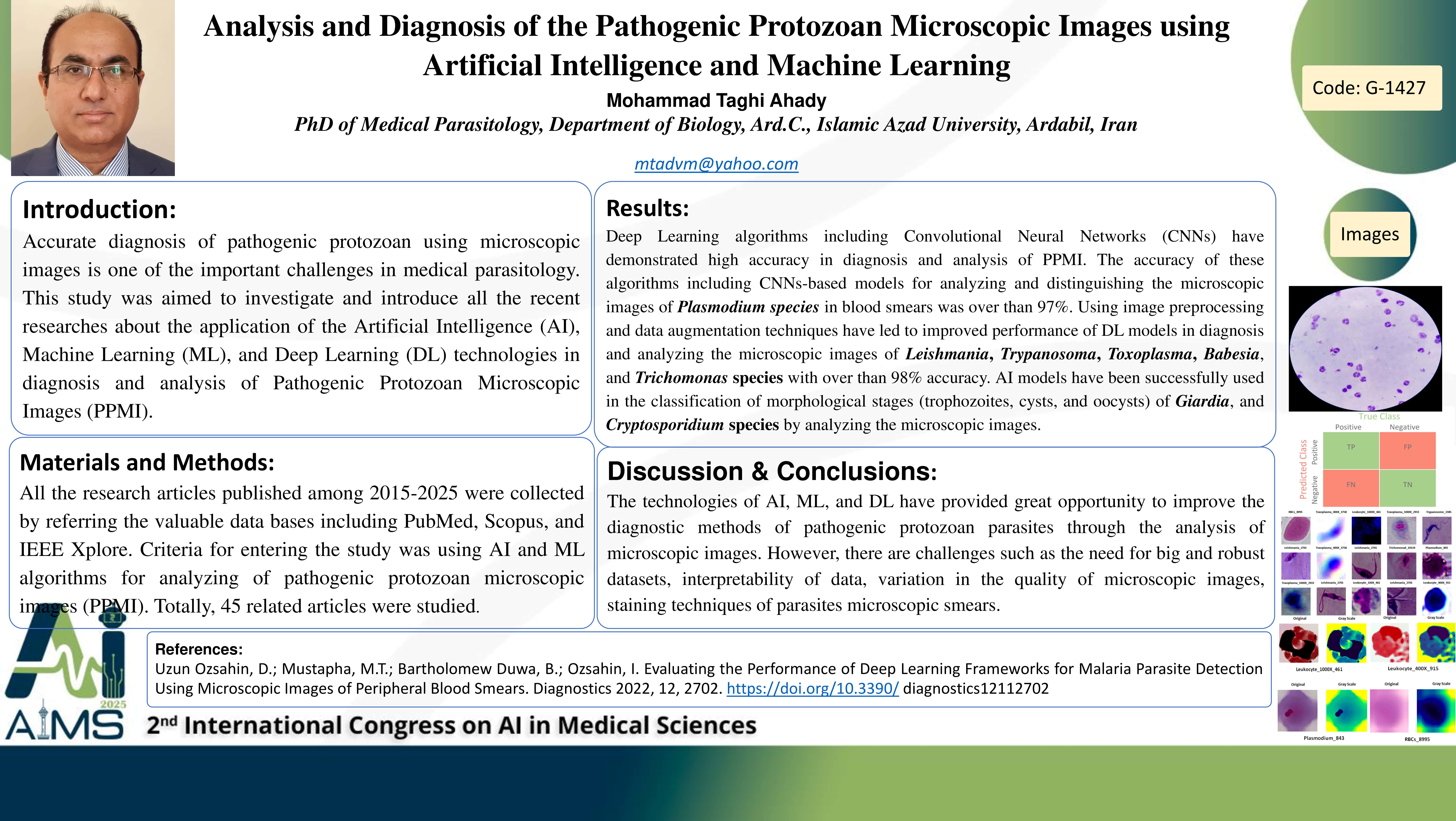Analysis and Diagnosis of the Pathogenic Protozoan Microscopic Images using Artificial Intelligence and Machine Learning
Code: G-1427
Authors: Mohammad Taghi Ahady * ℗
Schedule: Not Scheduled!
Download: Download Poster
Abstract:
Abstract
Background and Aims: Developing of the Artificial Intelligence (AI) technology in the 21th century has provided a golden opportunity for application of this technology in medical sciences several disciplines including laboratory diagnosis of the pathogenic microbes such as parasites. Accurate diagnosis of pathogenic protozoan using microscopic images is one of the important challenges in medical parasitology. Analyzing the microscopic images of infectious protozoan using the AI technology are going to be the precise and powerful instrument for diagnosing of the pathogenic protozoan morphology. This study was aimed to investigate and introduce all the recent researches about the application of the Artificial Intelligence (AI), Machine Learning (ML), and Deep Learning (DL) technologies in diagnosis and analysis of Pathogenic Protozoan Microscopic Images (PPMI). Methods: In this study, all the research articles published among 2015-2025 were collected by referring the valuable data bases including PubMed, Scopus, and IEEE Xplore. Criteria for entering the study was using AI and ML algorithms for analyzing of pathogenic protozoan microscopic images (PPMI). Totally, 45 related articles were studied. Results: The results showed that Deep Learning algorithms including Convolutional Neural Networks (CNNs) have demonstrated high accuracy in diagnosis and analysis of PPMI. The accuracy of these algorithms including CNNs-based models for analyzing and distinguishing the microscopic images of Plasmodium species (malaria disease causing agents) in blood smears was over than 97%. Using image preprocessing and data augmentation techniques have led to improved performance of DL models in diagnosis and analyzing the microscopic images of Leishmania, Trypanosoma, Toxoplasma, Babesia, and Trichomonas species with over than 98% accuracy. On the other hand, AI models have been successfully used in the classification of morphological stages (trophozoites, cysts, and oocysts) of Giardia, and Cryptosporidium species by analyzing the microscopic images. Conclusion: The technologies of AI, ML, and DL have provided great opportunity to improve the diagnostic methods of pathogenic protozoan parasites through the analysis of microscopic images. However, there are challenges such as the need for big and robust datasets, interpretability of data, variation in the quality of microscopic images, staining techniques of parasites microscopic smears.
Keywords
Artificial Intelligence, Pathogenic Protozoan, Microscopic Images
